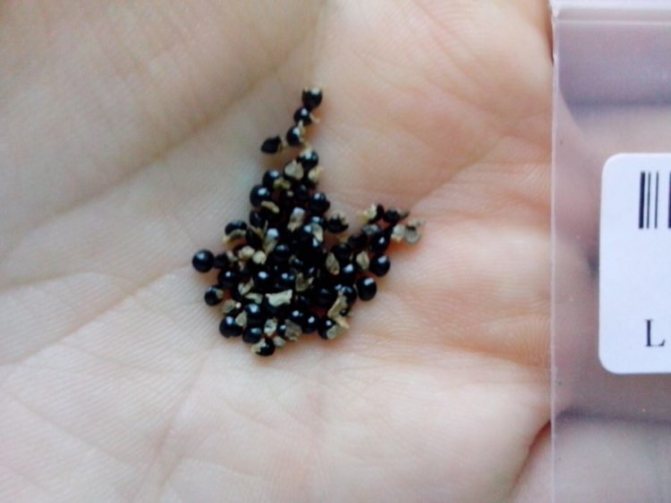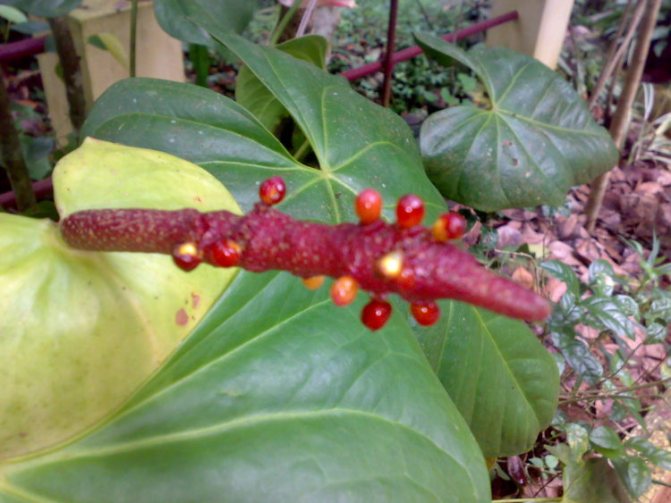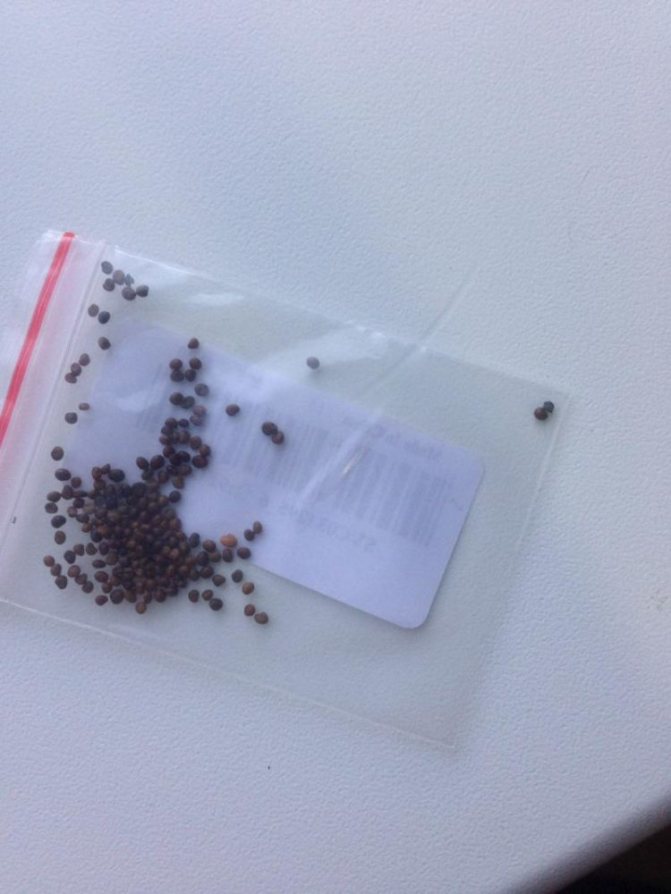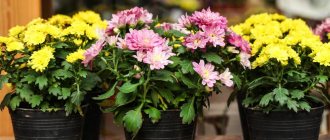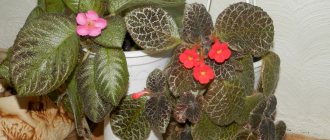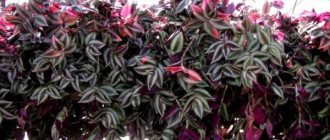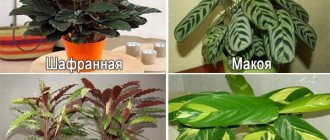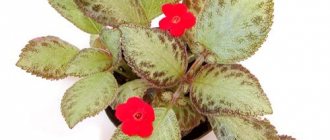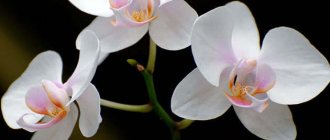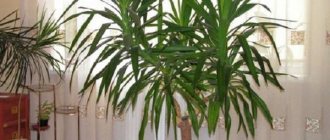Anthurium began to populate the window sills of flower growers since the end of the last century. This representative of the flora cannot be confused with another houseplant thanks to the original business card - the ear of a flower is surrounded by a kind of petal-veil, the surface of which seems to be covered with wax.
Most often, bright red inflorescences are found, however, other, more exotic colors are known - pink, orange, purple and even blue.
Anthurium propagates at home quite simply - cuttings with aerial roots, young shoots or stem suckers are used for this. As a result, several young seedlings can be obtained from one bush, which will soon please with flowering.
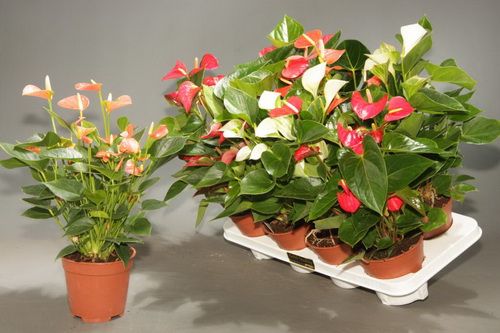
Reproduction of anthurium by a leaf
Reproduction of anthurium using leaves will be successful if the leaf is planted in the soil, while leaving a small part of the stem. It is important to take into account that there are a huge number of varieties of anthuriums, and the leaf type of reproduction is not suitable for all of them. First of all, you should pay attention to the structure of the plant leaf: if it is strong and has characteristic thick veins, it means that it will definitely take root itself, which will later form into a full-fledged aerial root system. Varieties that reproduce well by the sheet method include:
- leathery anthurium;
- Scherzer's flower;
- Andre or Turenze;
- other species showing signs of strong foliage.
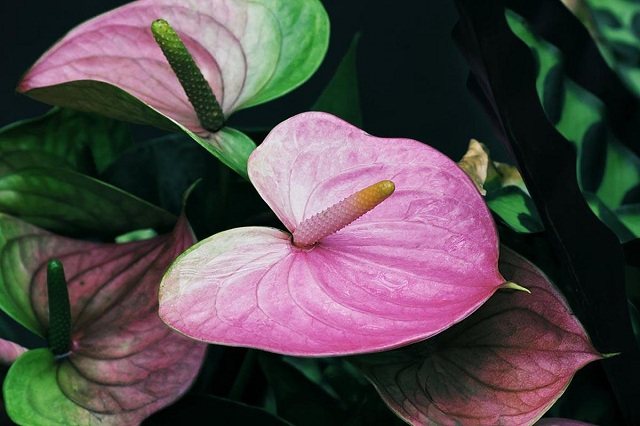

Reproduction of anthurium by a leaf is performed as follows: first you need to cut off the leaf, leaving the length of the cutting no more than three centimeters, then carefully roll it into a tube. Pull the leaf with a thin thread or elastic, do not tighten too much. Prepare containers with a nutritious soil mixture in advance: sand, peat and vermiculite in a 1: 1 ratio. Planting and cultivation progress:
- bury the leaf into the soil by two-thirds;
- water;
- create a mini-greenhouse over the leaf from a small glass jar or polyethylene;
- keep the container in partial shade with an optimal temperature from 25 to 27 C, without bottom heating;
- air the planting daily, spraying with a root growth stimulator (a weakly concentrated solution will be enough);
- within twenty to twenty-five days, a young sprout should appear from the funnel, which should also be looked after. When it becomes stronger, the greenhouse can be removed, and after a month it is safe to transplant into a more spacious container.
There is another, simpler way of leaf propagation: you can put a strong leaf with an average stem length in the water and wait until the roots appear. However, despite the seeming simplicity, the option is no less troublesome: the water will have to be changed daily, moreover, it must be boiled, at room temperature, and if these rules are not followed, the stalk can quickly rot.
Care after breeding
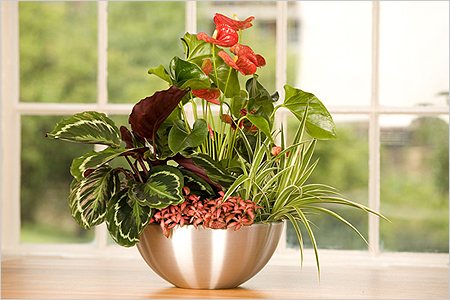

It is not difficult to take care of a flower after breeding:
- Air, spray, and water young plants.
- Until fully rooted, keep them under film or glass at a temperature of about 24 degrees.
- Add "Heteroauxin" or "Kornevin" to the water for irrigation once a week, spray with "Epin".
- Protect greenery from direct sunlight.Seeds need to be well lit before emergence.
- The first feeding during vegetative reproduction is carried out no earlier than 2 months later.
- Seedlings begin to feed 2 weeks after picking with fertilizers for azaleas, diluted 2 times.
- The first transplant is carried out in a year.
Read more about leaving in this article.
There are enough ways to propagate anthurium. Be patient, carefully follow the recommendations, and in a couple of years, young plants will bloom.
How to propagate anthurium by cuttings
Reproduction of anthurium by cuttings is carried out in spring or summer, in the first months, since the active circulation of sap inside the stems will contribute to intensive root growth and high survival rate of the young shoot. Cuttings from the tops or leaf cuttings are used as material, and the process itself is as follows:
- a leaf is cut off while maintaining the growth point;
- the length of the handle is no more than three centimeters;
- the cutting is soaked in a root growth stimulator for three hours;
- it is carefully dried;
- it is planted in the ground, which is equally composed of sand and peat bog. Capacity: a small plastic cup (by analogy, anthurium can be rooted in water with subsequent planting, but planting in the soil is often more effective);
- when planted in a glass, the growth point does not deepen;
- burying the stem into the soil - two-thirds;
- then - watering and creating an impromptu greenhouse (the easiest way is to use another glass)
- it is desirable that the temperature in the room at the time of disembarkation is from 20 to 24C, therefore summer and spring time is most preferable.
When a new one appears next to the first leaf, this means that rooting has gone well, and the young shoot must now be transplanted into a permanent pot with a prepared soil mixture. The optimal size of the container for anthuriums is medium, drainage holes at the bottom are required.
The choice of soil for planting
It is almost impossible to find a special primer suitable for anthurium in flower shops. Not ideal, but quite an acceptable option may be a substrate for orchids or violets. You can mix the correct soil yourself, for this there are two main recipes:
- 1 part turf, 3 parts leaf humus and 1 part perlite (you can add a small amount of charcoal to the finished mixture);
- in equal proportions: substrate for azaleas or rhododendrons, bark, sphagnum, peat chips, small expanded clay.
Seed propagation
Reproduction of anthurium by seeds is not very popular with experienced flower growers, since it is a long and laborious process, without guarantee that the planting material will germinate and give full-fledged seedlings ready for independent growth. However, if this method is crowned with success, the florist can rightfully call himself a real breeder, because no one else of his acquaintances will have such an anthurium. A significant minus, which will also have to be taken into account when the seed method of breeding, is that the young plant will bloom very soon: after at least three years.
Buying seeds does not present any particular problems: they are freely sold in any flower shop or store. When buying, it is important to take into account the period of use: if six months have passed after collection, it makes no sense to plant the material, due to its poor germination. You should only use seeds that were harvested no later than three months before they appeared on the store counter.
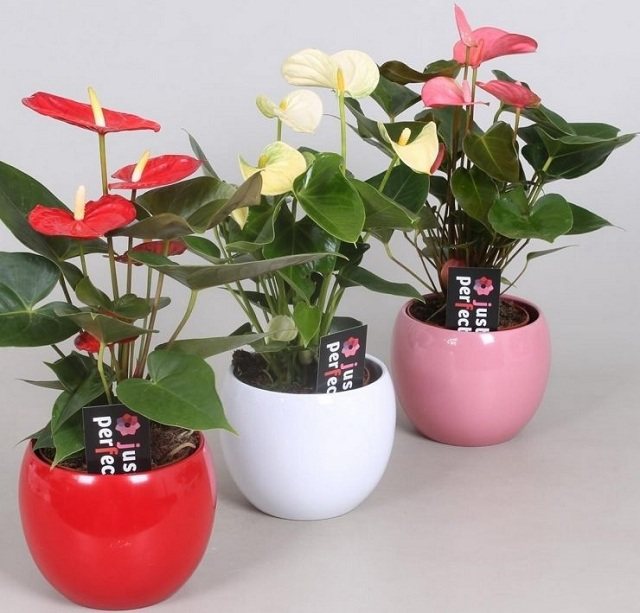

There is a possibility of obtaining high-quality planting material at home - provided that two flowers “live” in the apartment. When one of them begins to bloom, you need to touch its cob with a soft dry brush and shake the resulting pollen onto a sheet of paper, then placing it on the lower shelf of the refrigerator.Then wait for the second anthurium to bloom and carry out a procedure called cross-pollination. It is better to spend it in the morning, in bright sunlight, distributing pollen from the first flower over the cob of the second in even movements - first from bottom to top, then in the opposite direction. You can use a cotton pad or work with your fingers, while being very careful. Thus, anthurium should be pollinated four to five times daily.
When there is only one plant in the apartment, there is a small probability of self-pollination, but its percentage is an order of magnitude less.
If, after a month, signs of swelling appear on the pollinated ear, this means that the cross-pollination has been successful and the seeds begin to ripen. This process, of course, is long: in order for the future planting material to fully mature, it will take at least nine, maximum - twelve months. The main sign that the seeds are ripe is that the inflorescence will acquire a greenish-brown hue, and the seeds themselves will become dark, starting to "fall out" from the cob, as it were. Now they can be collected, removed the upper shells, dried outside for two to three days and sown in prepared containers as soon as possible:
- fill shallow bowls with dry peat;
- moisten and level the ground;
- soak the dried seeds in a weak solution of potassium permanganate;
- spread out on a cloth and dry a little;
- plant with even distribution in a bowl;
- sprinkle with soil two to three millimeters, no more;
- cover the bowl with an impromptu greenhouse;
- equip heating from below (temperature + 25C, lamp with bright, diffused lighting);
- ventilate the container every day for five to seven minutes;
- spray the soil if it dries up.
With proper adherence to the algorithm of actions, you can expect the first shoots after seven days. The greenhouse is removed with the appearance of the first full-fledged leaf, and when three-leafed shoots form in the bowl, they need to be planted in separate plastic cups with a nutrient mixture (peat, coal, earth). Before filling the containers with soil, a drainage layer is placed there, which should make up a third of the total volume of the pot or cup.
Care of young seedlings is carried out according to the usual principle, however, when applying fertilizers, their concentration should be halved compared to that indicated on the package.
Time to breed at home
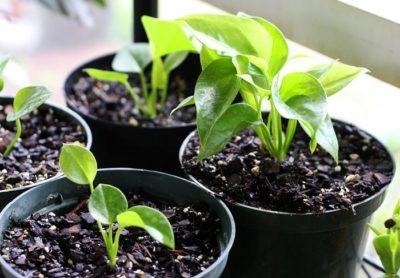

The most optimal time of the year for planting seeds (as well as for other breeding methods) is spring, namely the period from mid-April to mid-May. Landing at the beginning of summer is also considered permissible.
Planting in the winter is undesirable, but it will be effective with proper care. For winter sowing, it is better to choose the second half of February. The sprouts need to provide an ambient temperature of at least 22-25 degrees Celsius and additional lighting.
Reproduction of anthurium by side shoots
Breeding of anthurium with lateral shoots is most often carried out in conjunction with transplantation activities. The essence of the method: shoots with full-fledged roots and leaves are separated from an adult flower. Taking a shoot from an anthurium in this way should be as careful as possible, keeping in mind the increased fragility of its roots. It is best to work by hand, without a knife, leaving on the roots the earthy lump they need.
Both the main flower and the processes are removed from the pot. You cannot try to get only a small shoot without affecting the bulk of the anthurium, as this can lead to the death of the roots. Seating is carried out as follows:
- prepare containers with sphagnum and nutrient soil in advance;
- water the earth well;
- plant flowers;
- cover with a greenhouse on top (cut plastic bottles, bags, etc.);
- maintain the optimal temperature and humidity in the room (28-32 ° C and 80 percent) so that all the planted flowers will take root safely;
- do not overheat anthuriums under the sun;
- ventilate them every day, removing the greenhouse, for 10-15 minutes, spraying with a weak biostimulating solution;
- remove the "greenhouse" after 30 days. Further, the care is carried out as usual.
What if the plant does not take root?
If a young plant does not take root, it is important to make sure that all conditions are met, temperature, humidity and watering frequency are correct. If all the rules of care are followed, and the anthurium still does not want to grow, you can use one of the complex growth stimulants, for example, heteroauxin, or a solution of succinic acid.
Reproduction of anthurium at home does not require special knowledge and skills, the main thing is to be patient and provide the flower with regular care and attention.
Reproduction by part of the root
How does anthurium reproduce by detaching the shoot with aerial roots? Their separation takes place exclusively by hand, and germination takes place in a container with clean sand and fertile soil, where perlite and vermiculite are also added. The soil should be kept moist at all times, and the roots should be removed, as usual, during transplanting a flower:
- only healthy roots are taken;
- placed in soil;
- maintain optimum soil moisture;
- wait 40 to 60 days;
- if everything goes well, the first leaves will appear, taking root;
- after 30 days, a transplant is carried out into a soil composition used already for adult flowers.
The choice of planting material
A shoot that already has aerial roots is ideal for reproduction, but, if necessary, you can choose a shoot without them. The stalk should be about 12 cm long and have at least 2 healthy leaves. In this case, the leaf plates themselves will not participate in the reproduction process, and after the cuttings are separated, they can be removed.
Important! For the cutting, it is necessary to choose only areas with absolutely healthy leaves without traces of damage.
We suggest reading materials on the propagation of anthurium by a leaf and planting from a healthy plant.
Young plant care
Anthurium is grown for a certain time, which depends on the chosen breeding method. In order for the grown flower to delight with its beauty as long as possible, the accepted rules of care should be followed. First of all, you need to pay attention to the temperature in the room, remembering that even indoors, anthurium is a southern tropical plant, for which a coolness below 15-18 degrees is already unfavorable. He will feel great in a warm room, where the thermometer rarely drops below 20
Abundant watering is required for the flower in the spring and summer seasons, while it is important to ensure that the liquid in the pots does not linger for a long time: its prolonged stagnation can provoke rotting of the root system. During transplantation, special attention should be paid to the thickness of the drainage layer, and 30 minutes after watering, all the collected liquid is drained from the pallets.
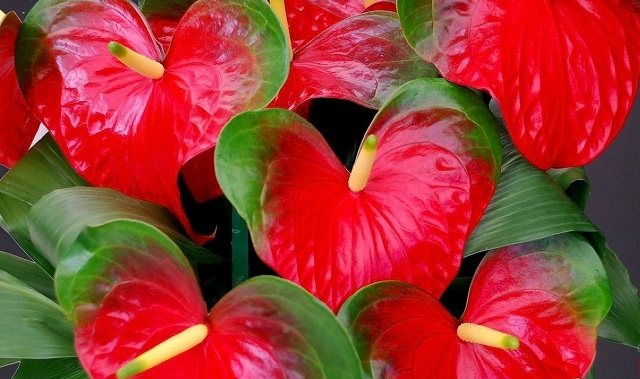

The atmosphere of “comfortable and humid tropics” for anthurium can be maintained by using additional containers of water installed next to the flowers. This will maintain the required humidity level. In order for it to remain in the soil longer, the top layer of the earth is covered with moss or coconut fibers.
It is necessary to carefully monitor the state of the root system and prevent it from drying out. It is better not to overdo it with fertilizers, or use only natural organic products in the form of chicken manure, humus or mullein, diluted with water.
Advantages and disadvantages of the method
Vegetative propagation methods have one important advantage in comparison with seed germination: an adult plant capable of blooming can be obtained in just a few months. In addition, caring for tiny seedlings requires great attention, otherwise fragile seedlings may die. In the case of rooting a cutting, everything is much simpler.
When reproducing and carrying out other manipulations, it should be remembered that anthurium, like most representatives of its species, is a poisonous plant. When anthurium juice comes into contact with the skin, symptoms occur that are characteristic of allergic reactions: itching, irritation, redness. If accidentally ingested, the juice can cause serious poisoning.
Attention! When carrying out any operations with the plant that can cause damage to it, it is imperative to use rubber gloves. After completing the work, hands should be thoroughly washed.
In what cases is anthurium grown from seeds
This method of growing plants can be useful when there is a need to get many plants of the same type at a time. Using this method of planting, you can get more than three dozen.
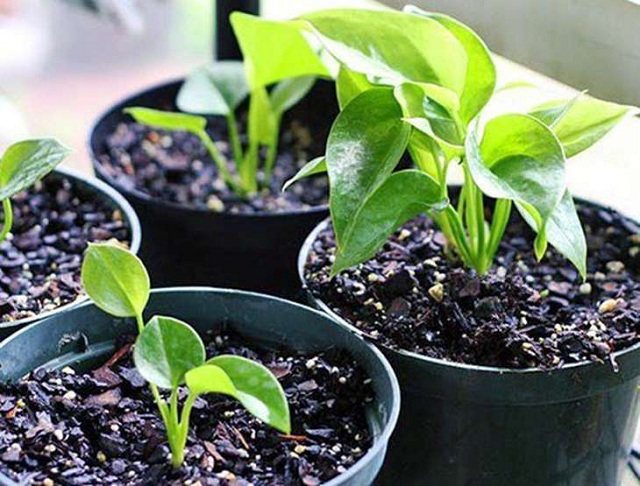

The need to propagate a plant by seeds may arise from private breeders selling anthuriums or in fruit nurseries.
Also, sowing flowers from seeds is required when purchasing them from other cities or countries in order to replenish your collection with new rare specimens.
Breeding work also requires growing anthurium from seed from carefully selected parents.
Anthurium - description of the species
In nature, anthuriums are common in the humid tropics of Central and South America. It is one of the most numerous members of the aroid family. There are about 500 species of this plant of natural origin and varieties obtained as a result of selection.
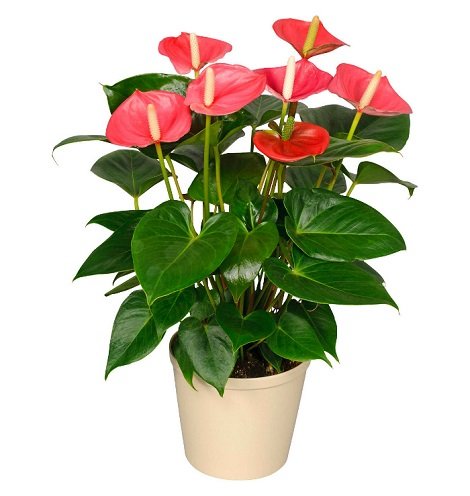

Blooming anthurium will decorate any home or office
In blooming anthurium, attractive, first of all, is the veil - a large heart-shaped stipule in the form of a sail... Depending on the variety, it can be pink, red, white, lilac and even blue. The flower itself is an unattractive ear with a delicate aroma. After flowering, the bedspread turns green and looks like an ordinary leaf.
In indoor conditions, the anthurium bush often reaches a height of 70 cm. The leaves are arrow-shaped or heart-shaped, rigid, glossy in many varieties.
Anthurium is that rare flower that is customary to give to men. The flowering bush has an ideal, almost austere shape and, perhaps, that is why the people call it male happiness.
Blooming varieties of anthurium are more popular among amateur flower growers, but decorative deciduous varieties have many admirers.
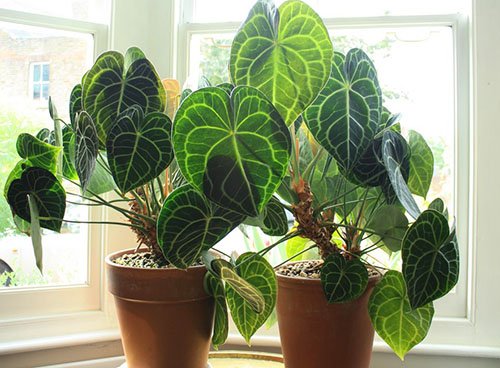

Crystal anthurium is beautiful for its large decorative leaves

